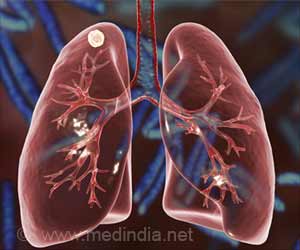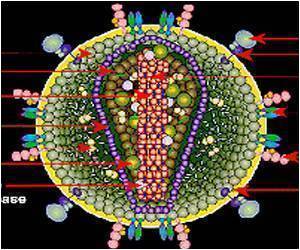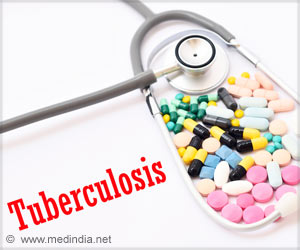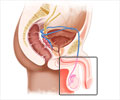Tuberculosis Screening: A new triage test for TB has been developed that can detect active tuberculosis (ATB). The test is very accurate, fast, and cheap and could potentially save the lives of many TB patients.
- New TB triage test has been developed for detecting active tuberculosis (ATB)
- It is very accurate, fast and cheap and is ideal for low-resource settings
- It could potentially save the lives of many patients suffering from ATB
Read More..
Study Team
The study was jointly led by Dr. David Walt, PhD and Dr. Michael Gillette, MD, PhD. Dr. Walt is a Core Faculty Member of the Wyss Institute, Boston and is also the Hansjörg Wyss Professor of Biologically Inspired Engineering at Harvard Medical School, Boston. He also holds joint appointments as Professor at Brigham and Women’s Hospital, Boston and Howard Hughes Medical Institute, Chevy Chase, Maryland, USA.Dr. Gillette is a Research Scientist and Senior Group Leader of the Proteomics and Biomarker Discovery Program at the Broad Institute, Cambridge, Massachusetts. He is also an Assistant Professor of Medicine at Harvard Medical School, Boston and a Pulmonary/Critical Care Physician at Massachusetts General Hospital, Boston, Massachusetts, USA.
Dr. Donald Ingber, MD, PhD, was the senior advisor and collaborator of the study. Dr. Ingber is the Founding Director of Wyss Institute, Boston. He also holds several joint appointments, such as the Judah Folkman Professor of Vascular Biology at Harvard Medical School, Boston and the Vascular Biology Program at Boston Children’s Hospital, as well as Professor of Bioengineering at Harvard’s John A. Paulson School of Engineering and Applied Sciences, Cambridge, Massachusetts, USA.
The first author of the paper was Dr. Rushdy Ahmad, PhD, a former Research Scientist at the Broad Institute, Cambridge, Massachusetts. He is currently the President of True North Bio, LLC based in Cedar Park, Texas, USA.
What is meant by ‘Triage’?
The term ‘triage’ means prioritization of the order of treatment of a large number of patients based on the urgency or seriousness of the disease. The new triage test for diagnosis of active tuberculosis (ATB), developed under the leadership of the World Health Organization (WHO), will help patients at the highest risk of acquiring ATB get timely treatment on a priority basis.Salient Features of the TB Triage Test
The salient features of the test are highlighted below:- It is a multiplexed blood-based test that helps in early detection of suspected ATB patients
- It picks-up and analyzes the ‘signature’ emitted by the combined effect of four protein biomarkers and an antibody targeting the TB antigen Ag85B
- The test is ultrasensitive and very fast that gives results within 30 minutes
- It is much cheaper than currently available TB tests, costing just USD 2 per test
- It is ideal for use as a point-of-care diagnostic test in low-resource settings
How was the TB Triage Test Developed?
The triage test for TB was developed by a large multidisciplinary team of researchers from several institutes in the US. The underlying principle of this triage test involves the detection of a ‘signature’ set of biomarkers present in blood that helps to diagnose suspected ATB patients.The levels of 47 different blood proteins were analyzed in around 400 samples from patients in Tanzania and the Philippines, who had been diagnosed with either ATB or a condition ‘Other than TB’ (OTB) using conventional microbiologic tests. The protein level data was analyzed using an algorithm based on machine learning. This algorithm accurately identified the following four proteins that were consistently elevated in the blood of ATB patients:
- Interleukin (IL)-6
- IL-8
- IL-18
- Vascular Endothelial Growth Factor (VEGF)
The research team further validated their algorithm by testing its ability to detect ATB in an altogether different set of 317 blood samples from patients in Vietnam, South Africa, and Peru.
Key Findings of the Study
The machine learning-based algorithm predicted the following:- Presence of ATB in 86 percent of all positive samples (Sensitivity: 86%)
- Absence of ATB in 65 percent of all negative samples (Specificity: 65%)
- Presence of ATB in 100 percent of HIV-positive blood samples
- Absence of ATB in 84 percent of blood samples obtained from cured ATB patients
“Our test demonstrated 87 percent sensitivity and 69 percent specificity, which are very close to the WHO’s minimum requirements of 90 percent sensitivity and 70 percent specificity for an effective TB triage test,” said Ahmad. “It also effectively identified the ATB signature in patient samples from three different continents, meaning it can detect many strains of the pathogen, and in both HIV-positive and HIV-negative samples, making it widely applicable to most ATB patients.”
It should be noted that the TB triage test didn’t predict ATB in 19 blood samples collected from patients with latent TB (LTB), indicating that the test would be highly useful for triaging patients who require urgent medical attention from those who don’t require immediate medical intervention.
“Not only is this method one of the fastest and most accurate ATB triage tests available, it is also much more amenable to deployment in low-resource communities than other existing approaches, it works on patients with different strains of TB, and its results are not complicated by HIV infection status,” said Gillette. “These qualities give it the potential to be a lifesaver by identifying patients who need a diagnostic TB test right away, which would reduce both deaths from undiagnosed ATB and overuse of antibiotics and expensive diagnostics on non-ATB patients.”
Future Plans
The researchers are planning to further refine and improve the TB triage test by incorporating more diagnostic biomarkers and multiplexing the assay procedure so that it would be possible to detect up to ten analytes at the same time.Concluding Remarks
Ingber concludes: “The approach taken to create this triage test – first identifying multiplexed biomarkers that provide a highly specific signature for a disease and then designing an assay to achieve endpoints that have been established by clinical need – represents a paradigm shift in the way that diagnostic tests are developed, and we hope to see this test and many others emerge from the Wyss Institute’s Diagnostic Accelerator in the future succeed where previous attempts have failed.”Funding Source
The research was funded by the University of Melbourne, Australia and a Grand Challenge in Global Health Grant from the Bill & Melinda Gates Foundation, USA.References:
- A Timely Triage Test for TB - (https://wyss.harvard.edu/news/a-timely-triage-test-for-tb/)
- A Rapid Triage Test for Active Pulmonary Tuberculosis in Adult Patients with Persistent Cough - (https://stm.sciencemag.org/content/11/515/eaaw8287)
Source-Medindia
















